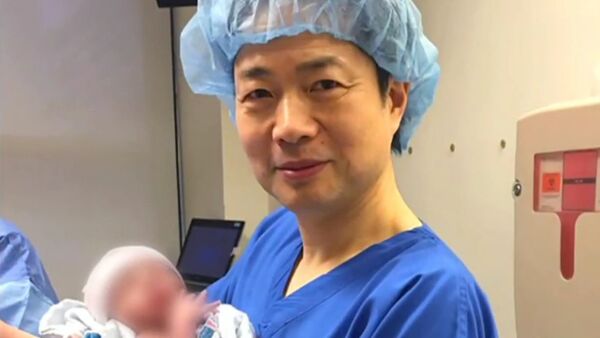Earlier this week it was reported that scientists from the Hope Fertility Center in New York, working at a clinic in Mexico, have successfully carried out a radical new fertility procedure using DNA from three people, which has only been approved in the UK.
The Jordanian couple had had four miscarriages and lost two older children to a devastating mitochondrial disease called Leigh syndrome, which causes the progressive loss of mental and movement abilities.
Simon Fishel, Founder and President of CARE Fertility Group and Professor of Human Reproduction at the University of Nottingham told Radio Sputnik that altering the mitochondria of the mother's egg was the only way for the couple to have a healthy baby, without the genetic defect.
"If we think of an egg with a white and a yellow part, the mitochondria sit in the white part, and the DNA, our genetic material, sits in the yellow part. It's actually just replacing the white part, and it's a very tricky, complex procedure," Fishel explained.
DNA is carried in the nucleus of every cell, and outside the nucleus are all the systems that enable the cell to operate, including mitochondria. Every egg cell has about 100,000 tiny mitochondria, which produce energy that allows the cell to function.
"If the mitochondria are not functioning then the cells and therefore organs and tissues will start to die, because energy is not being produced properly," Fishel explained.
"The important thing to note is that we are not modifying the DNA of the either of the donor women. We're just exchanging the material and that's very important because when we talk about three-parent DNA, the woman who's donating the egg only transmits about 0.1 percent of DNA to that resulted child," Fishel said.
"What is very important also to mention, is that not only do we have a child that will outlive the parent, but that child will no longer have to worry about passing on the disease to its children. It's been eradicated from that family, which they may have been suffering from for generations."
Testing on animals and other studies appear to show that the procedure is a safe one. However, the first human experiments carry risks that won't be fully understood until after many years of observation have passed, and must be carried out in a regulated environment in order to properly understand the effects.
"When you're talking about a process that involves eggs, sperm fertilization and the very beginnings of human procreation, we actually won't know the real answer (regarding) the effect on health for many years."
However, Fishel believes the procedure is a breakthrough with positive consequences.
"I think they're just concerned that it’s very very new. But I was involved with the first IVF baby back in 1978, and the world was against us then. But it's only produced good, and about seven million healthy babies worldwide. So we have to remain positive, but we also have to be circumspect in observing the outcome," Fishel said.



